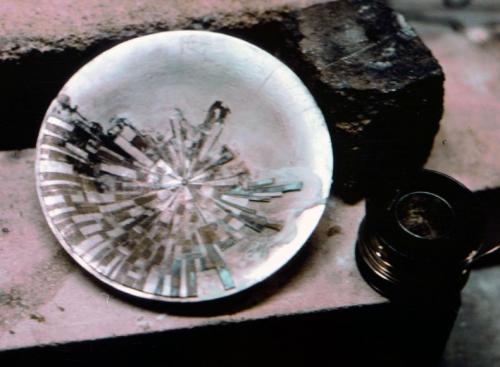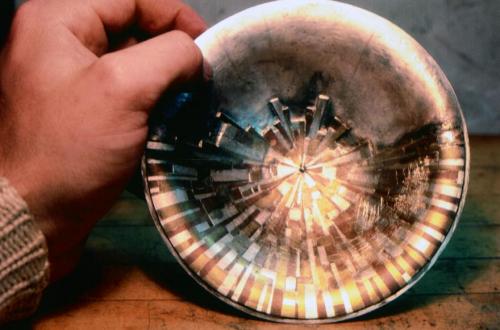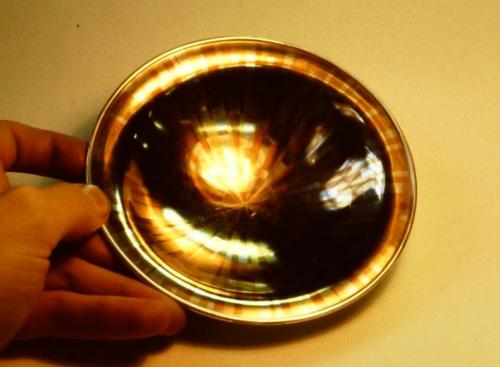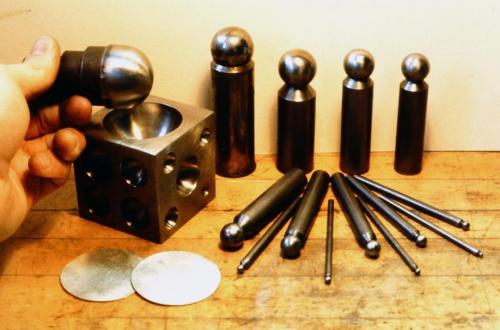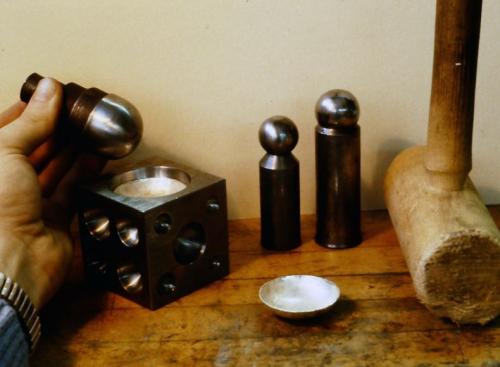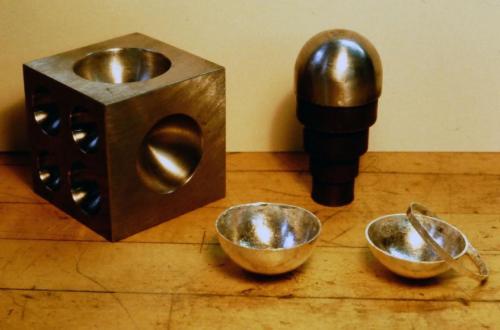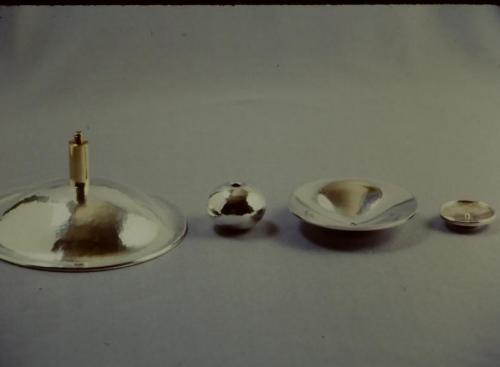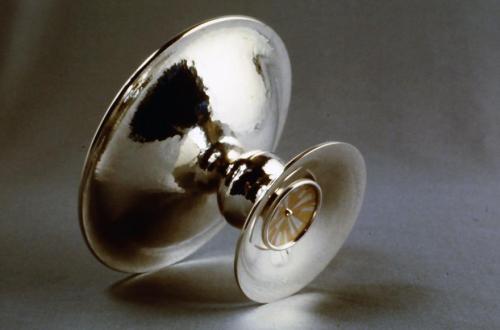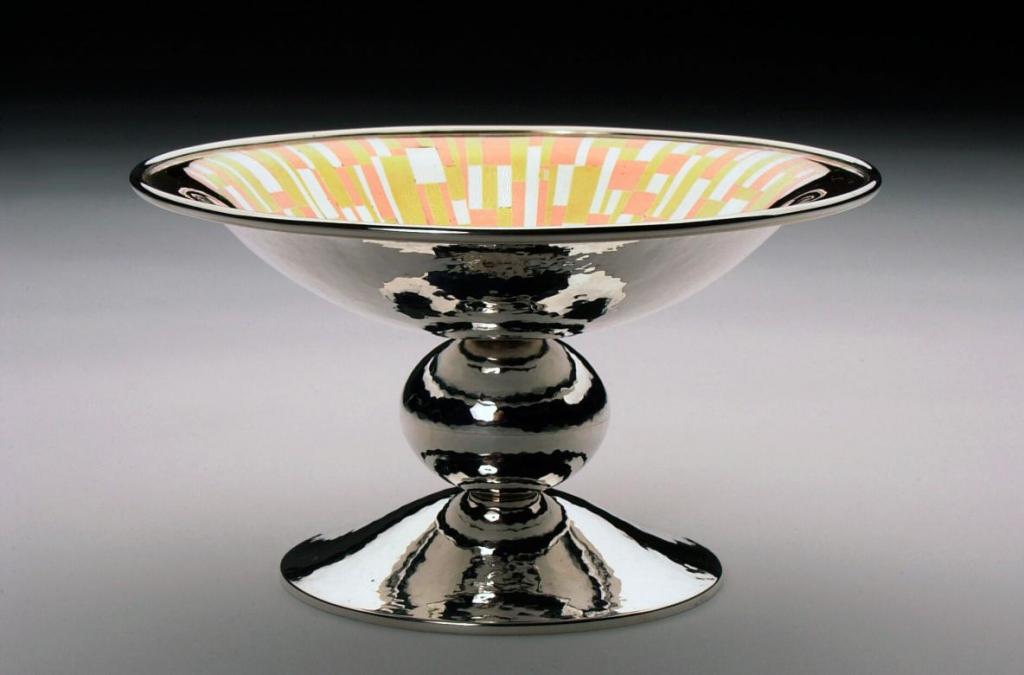
The Mosaic Bowl is a student piece, made when the price of silver had soared to $50 an ounce. I had one sheet of thin (24 guage) sterling and had managed to smith it into a shallow bowl. Then, as a means of thickening the bowl, I soldered into it a mosaic of 444 pieces of 18 guage sterling, copper, and yellow brass.
With the successful bowl in hand, I purchased sterling for the spherical transition, and reclaimed my silver scrap for enough material to make the base. A mosaic-patterned decorative nut within the base allows the piece to be disassembled for cleaning or repair.
Parenthetically, I finished the Mosaic Bowl before the end of the Iranian Hostage Crisis in 1980. Later, I counted the number of pieces in the soldered inlay. The bowl contained 444, the exact number of days that the hostages had been kept in captivity, and there were 52 inlay pieces in the decorative nut, the same as the number of hostages involved!
